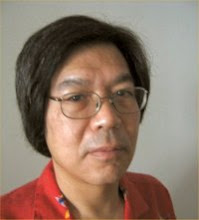It's been more than a month since i posted a blog, and it's been a busy month: there were screenings for the annual Rendez-vous With French Cinema series, there were the press screenings for New Directors/New Films, and then there were press screenings for "The Art of the Real", a series curated by Dennis Lim for the Film Society of Lincoln Center. In addition, there were several events, such as the press preview of the Whitney Biennial (the last to be held at the Marcel Breuer building on Madison Avenue).
During the last month, there were the announcements of a number of deaths; in terms of film, three of the great filmmakers to emerge during the 1960s, Miklos Jancso (from Hungary), Alain Resnais (from France) and Vera Chytilova (from Czechoslovakia), died within the last month. All three had helped to define the modernist aspirations of their national cinemas. Chytilova, of course, was not just one of the major Czechoslovakian filmmakers, but also a notable feminist artist; while some of her colleagues, such as Milos Forman and Ivan Passer, chose to emigrate, she chose to remain in Czechoslovakia, in spite of the frustrations of political censorship. Her most famous film was the anarchic comedy "Daisies"; i've seen three other feature films, her first feature, "Something Else" (which i remember for the beautiful black-and-white cinematography, which rendered some of the scenes, such as the gymnastic exercises, remarkably abstract), "The Fruits of Paradise" and "The Apple Game". Jancso's "The Round Up" and "The Red and the White" announced a startling talent, a visionary filmmaker who used a constantly moving camera to reveal historical pageantry. For me, his most galvanizing films were those which also used music and stylized movement to convey emotional epiphanies; my favorites would include "Cantata", "The Confrontation" and "Red Psalm". Jancso was the most prominent of the Hungarian filmmakers from the 1960s, but others would include Pal Gabor, Karoly Makk, and Marta Meszaros (at one time, Jancso and Meszaros were married).
From 1959 through 1965, all "new" French films were classified under the rubric of the "New Wave", but we soon learned that there were different groups. Chiefly, there was the group which was classified as the critics from the Cahiers du Cinema (Godard, Truffaut, Chabrol, Rivette, Rohmer, Doniol-Valcroze) and those filmmakers who were part of "the Left Bank" (Resnais, Chris Marker, Agnes Varda, Henri Colpi, aligned with prominent writers such as Alain Robbe-Grillet, Jean Cayrol, Marguerite Duras). Although there was a tendency to concentrate on the thematic continuity of Resnais's early career (specifically, the power of memory), his early films showed a great stylistic variety in abstracting dramatic construction. Throughout his career, Resnais's interest in formalism was a defining characteristic. For those of us who grew up in the 1960s, Resnais's early features ("Hiroshima Mon Amour", "Last Year at Marienbad" and "Muriel") seemed to define one of the most radical approaches to film form.
The Nouvelle Vague seemed to proclaim the French film industry as one of the most exciting places for the development of cinematic aspiration: there were filmmakers who were making films which attempted to redefine, extend and subvert normative formal and narrative structures, and those filmmakers were also connecting to audiences. This was the promise of the cinema: that there could be an art which could be of the utmost intellectual and formal rigor, as well as an art which would prove to be popular. Resnais had achieved this with his first two features, "Hiroshima Mon Amour" and "Last Year at Marienbad"; French cinema had become synonymous with adventurous filmmaking, and that continues to be the expectation which fuels the interest in the annual Rendez-vous With French Cinema. And so any comments on the films i saw during this year's edition of Rendez-vous With French Cinema must be tempered with the kinds of expectations which one brings to the films.

